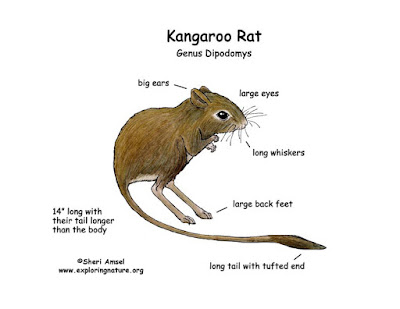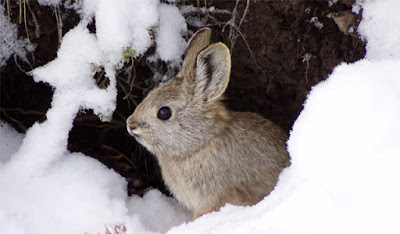Southern Sea Otters Nick Adler
Nick Adler
11/10/17
Southern
Sea Otters (Enhydra lutris nereis): Super Cute Guardians of the Kelp Forest
Fig. 1
Smiling
Sea Otter
Description: At first glance it can be hard
to believe that this silly looking creature is absolutely essential to an
entire ecosystem. But the Southern Sea Otter is just that, acting as a keystone
species in Kelp Forests off the Pacific Coast of the U.S. The Sea Otter is the heaviest
species in the Weasel family, though it is the smallest marine mammal native to
North America. They have the densest coat of fur in the animal kingdom, which
helps to insulate them against the cold ocean water as they no fat or blubber
as many other marine mammals do. They influence the Kelp Forest primarily
through their diet, which consists largely of Sea Urchins, which if left
unchecked would devastate the kelp. Females typically give birth to one pup a
year, which, despite being uncommon among carnivores, is “consistent with other
marine mammals, except the Polar Bear” (Demaster 6).
Fig. 2 Impact
of Sea Otter on Kelp Forests
Geographic and Population Changes: Sea
Otters were nearly driven extinct in the 18th and 19th
century due to hunting for their fur. Legal protection in 1911 from the
International Fur Seal Treaty led to large population increases and
recolonization of many areas in Alaska and Russia. Though the remnant
population of Southern Sea Otters living off the coast of California appeared
to increase in size throughout the 20th century, the population did
decline during two periods: from 1976-1984 and from 1995-1999. The population
in 1976 was 1,789 individuals, while in 2002 the population was 2,139, showing a
significant increase, which has remained stable in the years since. The most
current population estimate from 2016 was over 3,090 individuals, which is very
promising. The current range of the Southern Sea Otter runs from San Mateo
County in the north to Santa Barbara County in the south. Despite some
optimistic predictions, it seems unlikely that the Otters will reclaim their
former range which ran along the entire Pacific coast of North America from
Alaska to Baja California.
 |
| Fig. 3 Historical vs. Current Range of all subspecies |
Fig. 5 Sea Otter affected by oil
(SAD)
Recovery Plan: While the recovery plan for
the Southern Sea Otter initially consisted largely of translocation programs,
these have been largely abandoned after being deemed ineffective following
multiple reviews. The recovery team believes that “range expansion of sea
otters in California will occur more rapidly if the existing population is
allowed to recover passively than it would under a recovery program that
includes translocating sea otters” (Demaster 28). Therefore, the strategy has
largely shifted to mitigating or eliminating the factors which are preventing
natural population growth, which include disease, fishing bycatch, oil spills, contaminants,
and intentional take of Sea Otters. The table below shows the tasks associated with
each threat. In order for the Otter to be delisted, the population must be
greater than 3,090 individuals for 3 years in a row, the first of which was
2016. “The ultimate goal of southern sea otter recovery is to reestablish
ecological relationships in the ecosystems where sea otters and other nearshore
species coevolved” (Carswell).
Table 1. Summary of Threats and Recommended
Recovery Actions
LISTING FACTOR
|
THREAT
|
RECOVERY CRITERION
|
TASK NUMBERS
|
A
|
Restriction
of range due to management zone
|
1
|
Evaluate
translocation program in light of changed circumstances and determine whether
one or more failure criteria have been met
|
C
|
Disease
|
1
|
Collect
and analyze tissues for evidence of stress or disease; determine sources of
disease agents and stress; minimize factors causing stress and disease
|
D
|
Incidental
take in fishing gear
|
1
|
Evaluate
causes of otter mortality; monitor incidental take in commercial fisheries;
evaluate the effectiveness of fishing regulations for preventing sea otter
take; evaluate incidental take in trap/pot fisheries; determine and take
possible steps to reduce or eliminate sea otter mortality incidental to
fisheries
|
E
|
Oil
spills
|
1
|
Implement
and monitor USCG vessel management plan; assess current risk of tanker
accidents and other sources of oil spills, including off-shore oil platforms,
pipelines, and marine terminals; implement an oil spill contingency plan that
includes a sea otter response plan
|
E
|
Contaminants
|
1
|
Evaluate
causes of otter mortality; analyze tissues from southern sea otters for
environmental contaminants and archive tissues for future analysis; determine
sources of environmental contaminants; determine contaminant levels in sea
otter prey and habitat
|
E
|
Intentional
take
|
1
|
Evaluate
causes of otter mortality; minimize intentional take
|
What can we normal people do: The
two biggest things the general public can do to aid the Southern Sea Otter is
spread awareness about its endangered status and support legislation in
California regulating or banning the extraction and transport of oil off the
coast of California. The first is particularly important as many people have no
idea that the Sea Otter is endangered and requires our help. The second is also
very important because, as previously discussed, oil spills represent the
gravest threat to Sea Otter populations, and these laws would also benefit many
other species which don’t want to be covered in oil. Donating to any number of
organizations and foundations which are dedicated to the preservation of
Southern Sea Otters is of course also great, and I have included one such link
below.
Other Resources:
If you haven’t seen the Sea Otters in Morro Bay, GO DO IT
YA DINGUS!!!
Bibliography:
Fig. 1: Merideth, Cassidy. “11 Reasons Why Sea Otters Are
The Cutest Animal Alive.” The Odyssey Online, 30 Oct. 2017, www.theodysseyonline.com/11-reasons-why-sea-otters-are-the-cutest-animal-alive.
Fig. 2: Media, Wharton. “Why Are Sea
Otters Important? No Sea Otters. No Kelp Forests.”SEAOTTERS.COM – POWERED BY
CUTENESS™, 23 May 2013, seaotters.com/tag/kelp-forests/.
Figs. 3 and 4: “Special Species
Status: Southern (California) Sea Otter.” SIMoN -- Special Status
Species: Southern Sea Otter (Enhydra Lutris Nereis), June 2006, sanctuarymonitoring.org/monterey/sections/specialSpecies/sea_otter.php.
Fig. 5: “Special Species Status:
Southern (California) Sea Otter.” SIMoN -- Special Status
Species: Southern Sea Otter (Enhydra Lutris Nereis), June 2006, sanctuarymonitoring.org/monterey/sections/specialSpecies/sea_otter.php.
United States, Congress, Demaster,
Douglas, et al. “Final Revised Recovery Plan for the Southern Sea Otter.” Final Revised Recovery Plan for the Southern Sea Otter, 2003, pp. 1–179.
Carswell, Lilian. “Southern Sea
Otter.” U.S. Fish and Wildlife Headquarters, www.fws.gov/ventura/endangered/species/info/sso.html.







I think you did a very good job covering all the topics. I liked your use of vocabulary words that we used in class. I also appreciated the table you included in your recovery plan section. -Karah Bengs
ReplyDeleteAs oil spills are the primary threat sea otters, I was curious to see if there were any direct actions that we could take in cleaning up oil spills that have already occurred. Although prevention like you stated is the best solution, I did a quick Google search and found this article: (https://inhabitat.com/top-5-green-ways-to-clean-up-oil-spills/) which provides some innovative ideas and solutions in cleaning up oil spills. For example, it includes a solution of donating pet hair, as it works as a oil-absorbing mat which I found to be very interesting and doable for the many pet owners out there. It is good to know that the sea otter population is currently hitting the 3,090 population mark, so hopefully it will be de-listed soon.
ReplyDelete-Sarah Bach
It was interesting to find out that sea otters have the thickest coat of fur in the animal kingdom. It is unfortunate that they were nearly hunted to extinction for their pelts. I like the format of your blog quite a bit, and I thought that it was very informative. Additionally, the visuals significantly aided your blog. I liked the table a lot. -Lucas Bartell
ReplyDeleteYour blog is very interesting and informative. I thought it was especially interesting how their fur is their main method of insulation, opposed to other marine mammals which have fat or blubber. I also liked how you explained the sea otters' role as a keystone species, and used a visual to show the impact of their survival on kelp forests. -Haley Baquian
ReplyDeleteI love this blog, cause of all the facts it has on some of my favorite animals. Keep it up!
ReplyDelete